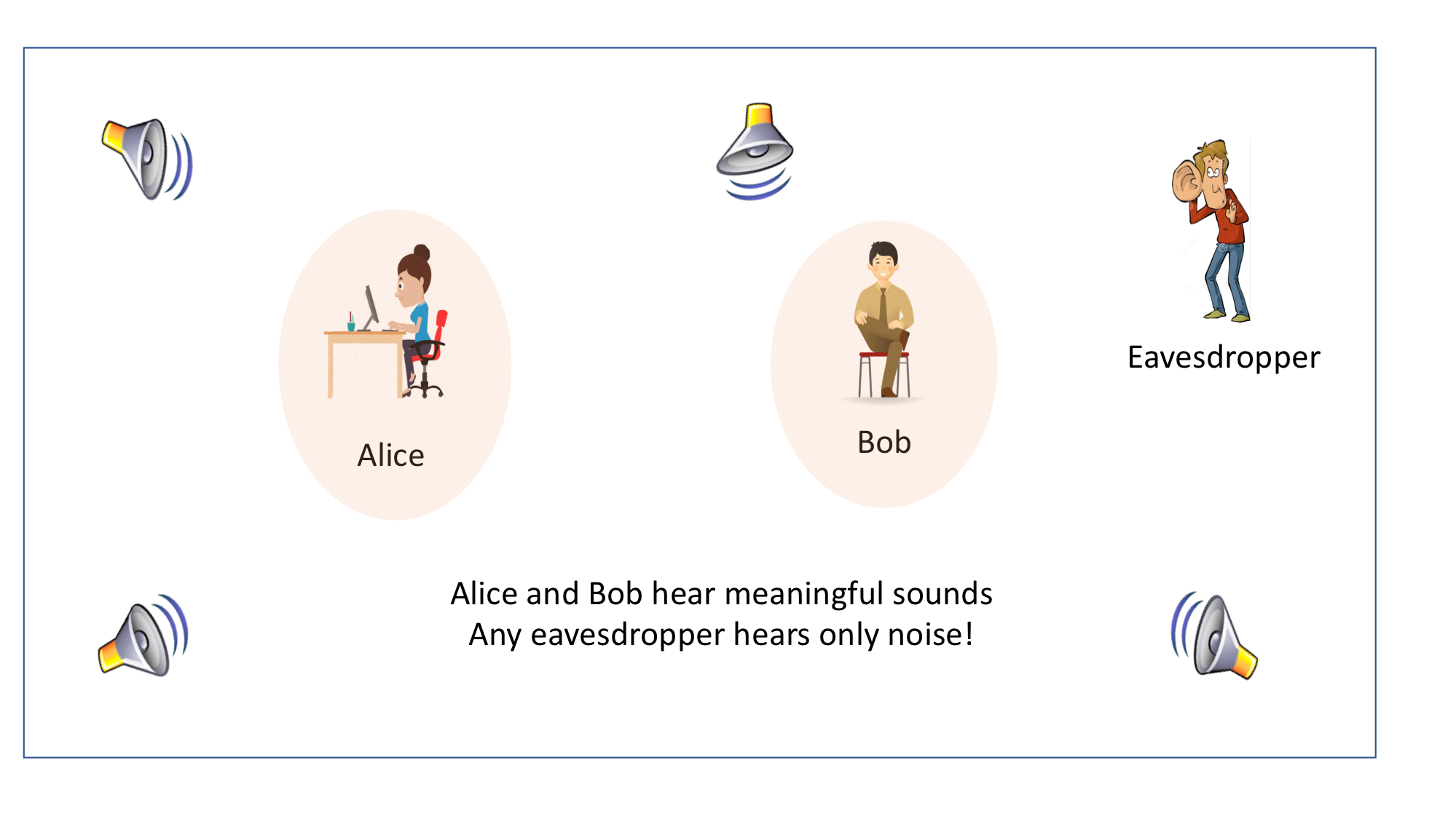| Audio signal desired to reach Alice | Audio signal desired to reach Bob |
We use our two proposed approaches to send these messages privately to Alice and Bob using 6 speakers. The Room impulse responses between the speakers and the two listeners are computed using Pyroomacoustics package. The following are the resultant audio signals heard by Alice, Bob and Eve.
| Signals received | MCCS approach | Nullspace approach |
| Audio signal heard by Alice | ||
| Audio signal heard by Bob | ||
| Audio signal heard by Eve |
- Real-world experiments
This experiment was repeated twice each with a different speaker-user configuration and different audio signals.
First configuration
The following signals are to be communicated.
| Audio signal desired to reach Alice | Audio signal desired to reach Bob |
| Signals received | MCCS approach | Nullspace approach |
| Audio signal heard by Alice | ||
| Audio signal heard by Bob | ||
| Audio signal heard by Eve |
Second configuration
The following signals need to be communicated.
| Audio signal desired to reach Alice | Audio signal desired to reach Bob |
| Signals received | MCCS approach | Nullspace approach |
| Audio signal heard by Alice | ||
| Audio signal heard by Bob | ||
| Audio signal heard by Eve |
 [Paper]
[ArXiv]
[Paper]
[ArXiv]
|
Citation |
